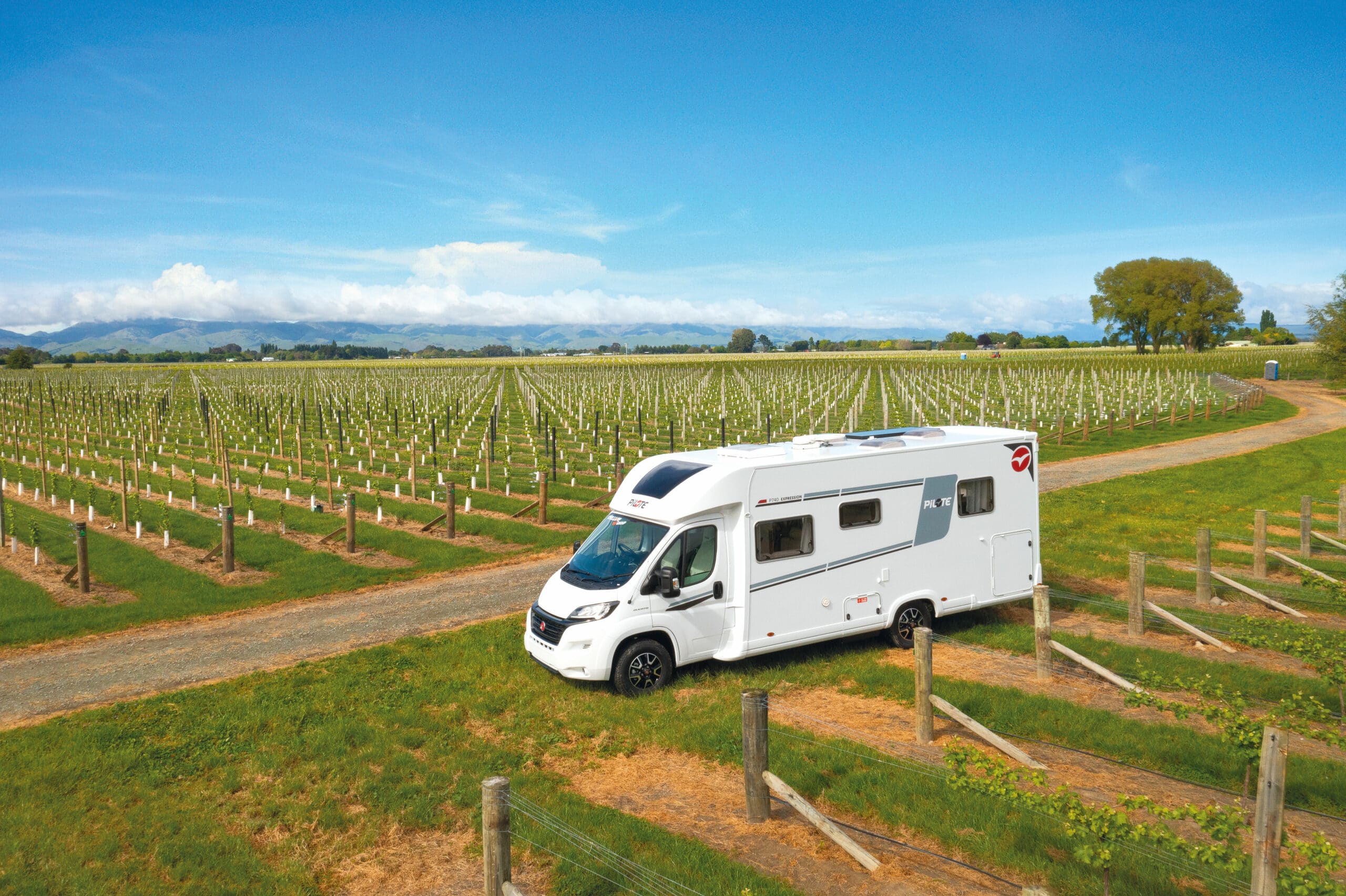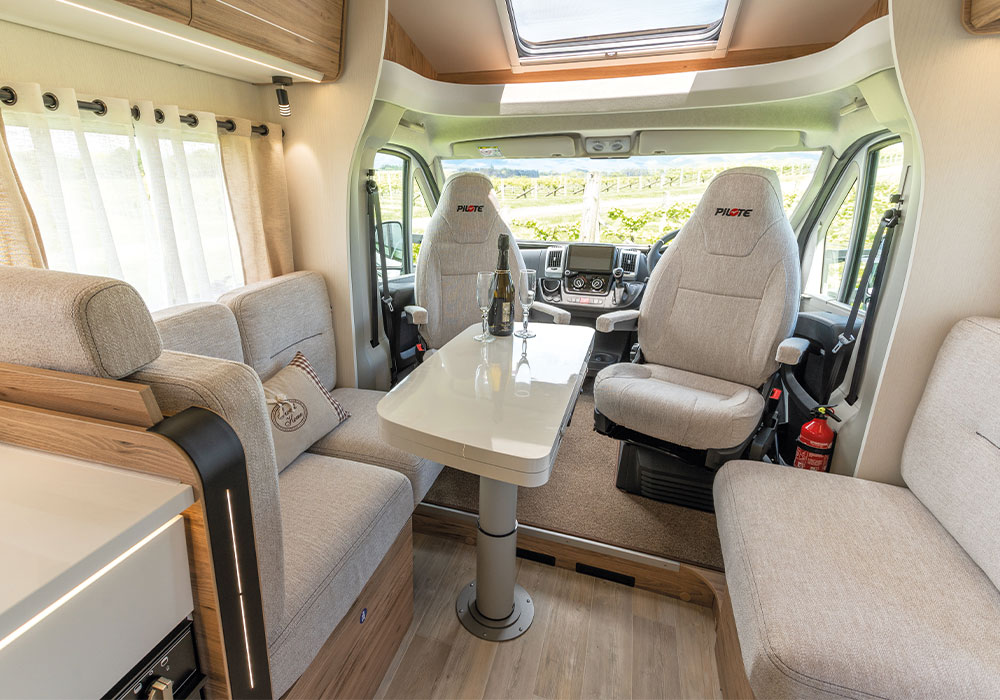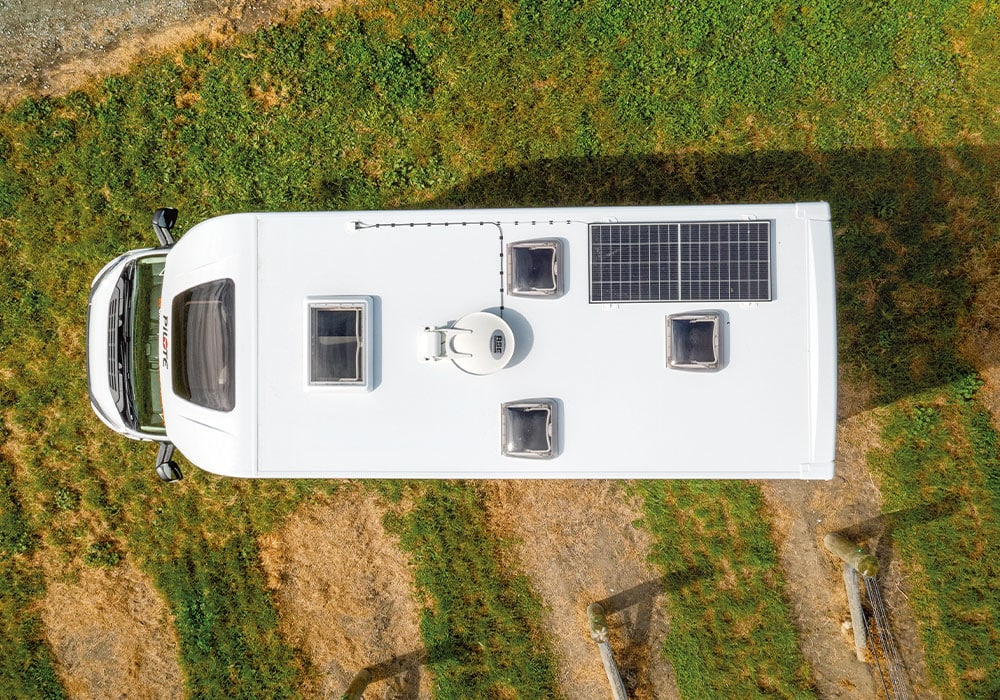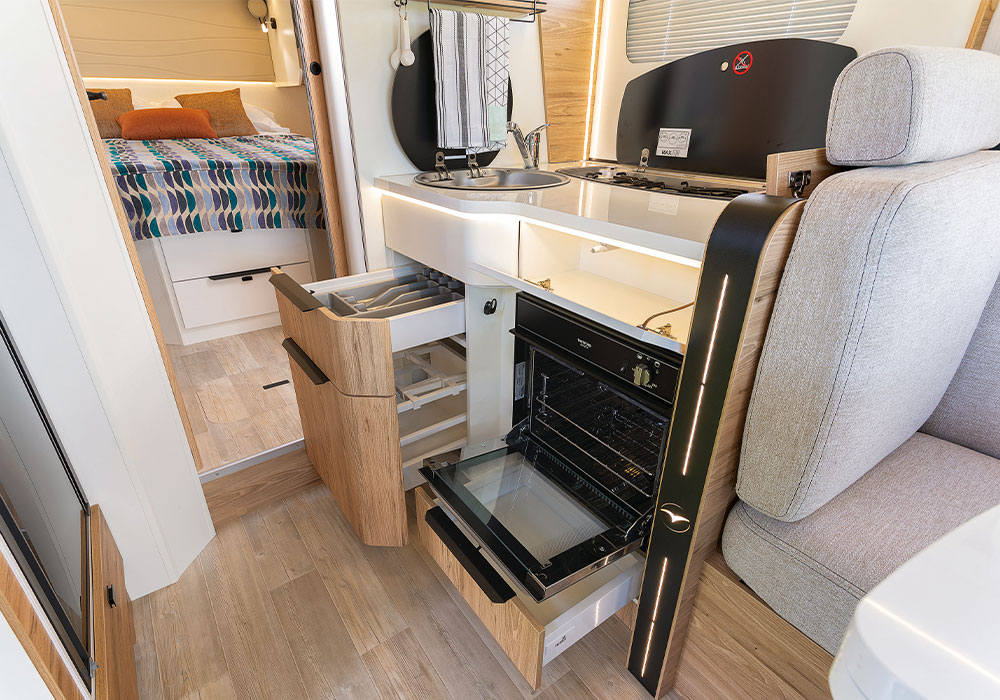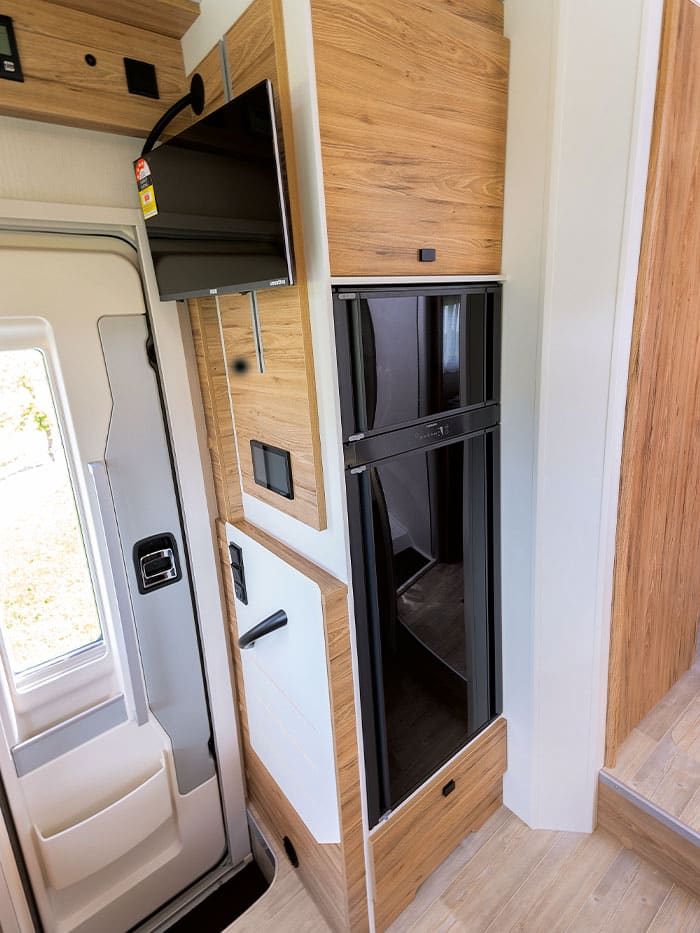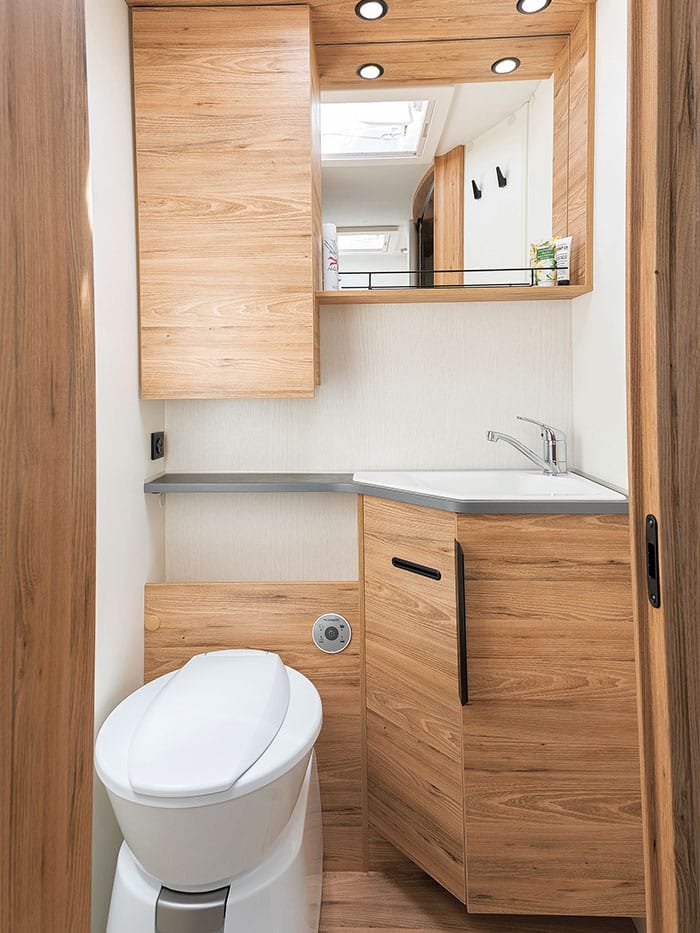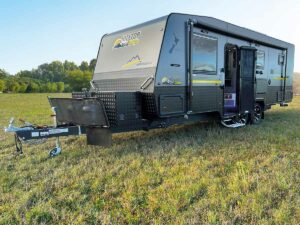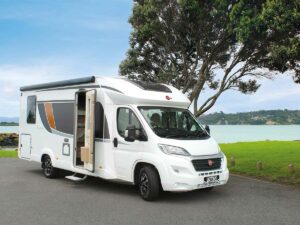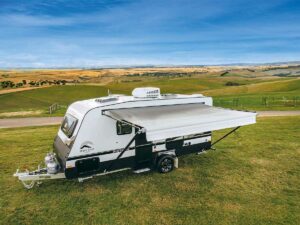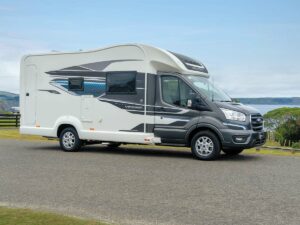French motorhome group, Pilote, celebrates its 60th anniversary this year, so it’s timely to look back on the humble origins of France’s second-largest motorhome manufacturer and see how far it has come, says Paul Owen.
It all kicked off back in 1962 when André Padiou built a humble little caravan in a small corner of his father’s cabinet-making workshop in La Limouzinière, near Nantes in western France. These days, the Pilote Group is a motorhome-making machine, producing 7000 RVs a year and selling them under six brands, including the upmarket Frankia and Le Voyageur marques. The $203,990 7.4m Pilote P740 sampled here sits smack in the middle of the group’s wide model range in terms of size, stature, branding and price, and could therefore represent the sweet spot when it comes to value for money. At first glance it would appear to stick to the same template as chosen by a lot of four-berth European semi-integrated, low-profile motorhomes of this popular length.
There’s an island bed at the rear, a separate shower and toilet/washroom as you move forward, followed by a kitchen, and the five-seat lounge acts as a make-up double bed. Even the butterfly table serving the lounge seats and swiveling cab seats with its shape-shifting versatility can no longer be counted as innovative, as many other brands now offer similar designs.
So, what are the unique selling points for the P740? Check out the lighter, more modern décor of the interior, and the way it all comes together. Then look closer at the details and fully examine the build quality of the Pilote. You begin to notice stuff like the superior locks and tight fitting double seals of the exterior locker doors, the way the rear wall is protected from damage by an optional robust skid rail should the overhanging rear end come into contact with the road when turning into a driveway, and the way the joins between added body parts like the mudguards and where the Fiat Ducato cab meets the GRP/composite cabin have been sealed by proper rubber strips rather than crude lines of sealant. It appears that much of the quality detailing normally associated with a patrician Frankia or a Le Voyageur trickles down to a Pilote.
An Expert History
The group, which is now led by Patrick Guilloux, the former boss of superyacht manufacturer, Bénéteau, has strived hard to achieve standardisation of production over recent years. Computer Aided Design (CAD) and Computer Aided Engineering (CAE) play important roles in the five-step process of creating a new Pilote.
The group’s three French and one German production facilities are divided into five sections. There’s the unit that creates the GRP/composite sandwich walls and other body parts like the hail-proof polyester roof, while in another part of the factory a separate team is building the furniture for the motorhomes, the group’s overall operations shaping over 200,000 square metres of wood each year. These parts are then brought together and assembled before being supplied to the sort of mobile assembly line first envisaged by Henry Ford. The final step for each of the group’s motorhomes is a rigorous quality check, including being blasted with water from all angles to check that they are totally stormproof. All Pilotes meet the top Grade 3 insulation tier of British Standard 1645-1, which requires that the interior be able to maintain a cabin temperature of 20 degrees Celsius when it is -15C degrees outside. It’s the styrofoam filling inside the walls, floor and roof that helps maintain cabin temperature; it’s 28mm thick on the walls and roof, and 35mm thick on the floor. A 6kW Truma gas unit ushers warm air around the cabin and heats hot water inside the P740, and, like some, comes with an automatic frost protection valve that activates to empty the water systems of the Pilote should the cabin temperature drop below 4C°.
Fiat Foundation
Motivating the P740 is the Fiat Ducato’s latest state-of-the-art powertrain, featuring a 140bhp 2.2L turbo diesel engine driving the front wheels via a nine-speed automatic gearbox. The new 2,184cc motor is noticeably smoother and quieter than the 2.3L unit that it replaces, and the ZF nine-speed is the transmission that the Ducato has long been crying out for. You can have confidence that this is a motor-gearbox combo that is as sorted as they come, and the fuel efficiency is some of the best in the commercial van sector. The new engine uses AdBlue (urea) injection to get rid of lots of nasty toxins in the exhaust gases, so it’s far cleaner and greener as well as more frugal and responsive than the old 2.3L. One of the great features of the Ducato are the cab window blinds, which are manually deployed on the Pilote.
You get privacy and extra heat retention. The Ducato comes with cruise control and electronic stability control (ESP), and Pilote also fits a Pioneer multimedia screen that can project cell phone apps via Apple CarPlay and Android Auto. Offline inbuilt navigation is included as a standard. On their semi-integrated models of less than 7.4 metres in length, Pilote retained all of the Ducato chassis instead of replacing everything behind the cab with a honeycombed Al-Ko alloy chassis and rear suspension. The P740 is therefore the longest model to retain the full Fiat chassis, and New Zealand’s Blenheim- based distributor and dealer, Deluxe RV Group, offer a ‘rub rail’ fitted to the back of the chassis to protect the rear wall. It’s all part of their service that includes ensuring that the Pilote meets full self- containment
certification.
Another part of the Deluxe RV Group’s service is weighing the motorhome – if the buyer requests it – once all the chosen additional accessories have been fitted, with the water tank and diesel tank fully filled. This P740 came in at 3240kg with the standard equipment rub rail and twin 100Ah AGM batteries, plus the bike rack and the relatively large solar panel added. New Zealand Pilote P740s have a GVM of 3650kg, which left 410kg of payload remaining after those accessories were added and the diesel reservoir and 130L water tank were filled. This would appear to be more than adequate given that the weight of the heaviest onboard items – the full water and diesel tanks – has already been accounted for.
Cross Channel Décor
If you’d like an interior that sits somewhere in between the traditional dark wood veneers of British motorhome brands, and the cool modernism of the Chausson, the Pilote P740 is more than happy to provide it. The shades of brown, white, cream, and grey are artistically measured and distributed nicely around the cabin, and the result is very soothing and peaceful. As mobile places to relax go, this one’s hard to beat at this price, and Pilote gives buyers the opportunity to fine-tune the décor to their tastes.
There’s the pick of three wood veneers, two benchtop and splashback colours, while various seat coverings and curtain options are available on pre-order. The curtains are a more elegant way to screen the double-glazed windows than the pullup/pulldown blinds and insect screens. The precise fit of the joinery, and the way each section of the interior visually complements the other will ensure that potential for relaxation will last long into the ownership of the Pilote. There’s a sense of everything being designed as a whole, rather than a bit of bathroom here and a bit of kitchen there, and she’ll be right mate.
Starting at the rear bedroom, there’s some nice hanging wardrobes on either side of the island bed. They’re not long enough to stash your long ball gowns in, but they are perfect for anything jacket sized or less. Those who enjoy having long shelves on either side of the head of the bed to rest books and cups of coffee on will approve of the way that Pilote has designed those wardrobes so that handy bedside shelves can easily be located below them. The shower cubicle and the washroom/toilet sit on opposite sides of the P740 ahead of the bedroom, and these areas can be fully enclosed if desired with doors at either end. A proper screen seals off the shower so that water doesn’t escape into the adjacent drying area, and the washroom/toilet can also be enclosed when in use.
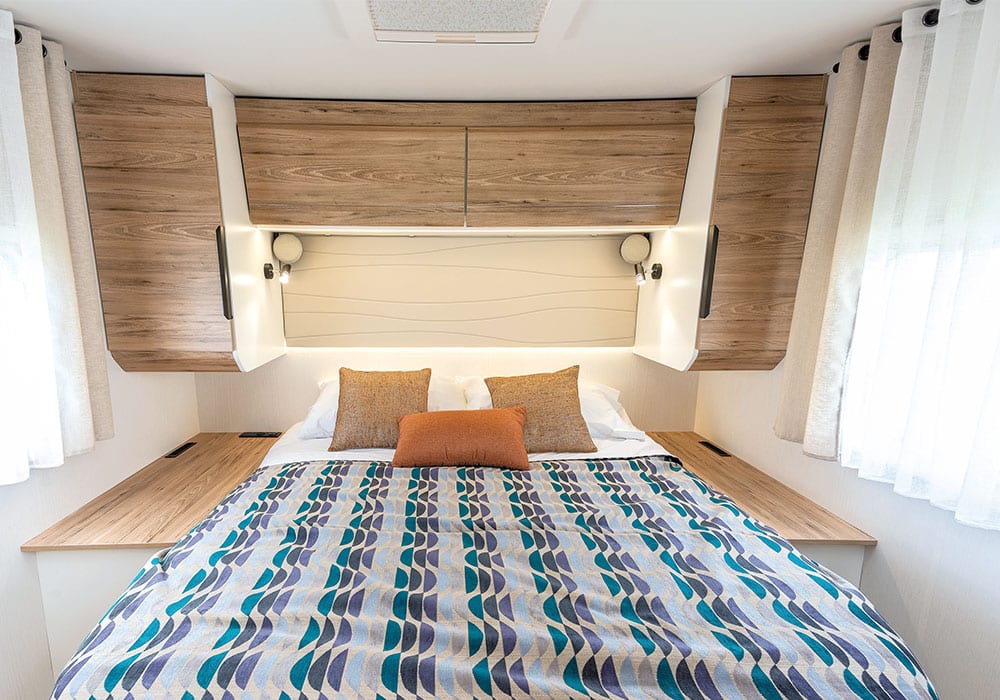
The kitchen bench has an unusual shape, being wider at the rear, and skinnier at the front, and works all the better for it. You get a deeper set of drawers below the wider section, while the skinny part allows easier reach to the three-burner gas hob located near the kitchen window. An extractor fan helps suck cooking aromas away along with the window if open. Below the skinny section is the oven/grill and a further drawer. Completing the kitchen are some generously sized overhead lockers with removable shelves inside, a pull-out pantry, and a three-way fridge/freezer unit located on the other side of the Pilote.
The lounge seats and swivelling cab seats are fabric, however leatherette is optional when pre ordered. They upholstered with a foam that feels initially firm and supportive. They’re likely to feel comfortable over a longer period of occupation than the squidgy lounge seats found in a lot of motorhomes and caravans. Transforming the five-seat lounge into four forward-facing seats with belts for travel is super quick and easy. You swivel the front seats in the cab, slide in the left-side bench support and erect the two pop-up single seat frames from their storage in the former bench supports. Job done in less time than it took to write this sentence.
Vive Le Pilote!
You can find less expensive motorhomes of this size and layout on the New Zealand market, and some will even offer features at that lower price point that must be added to the $203,990 Pilote P740 via the wide range of extra packages available. However, would those lower-cost motorhomes deliver similar satisfaction when you own them? No motorhome is perfect, but in terms of its design and build quality the Pilote P740 gets temptingly close to perfection. If you agree, then be prepared to wait until February, when the first shipment of MY2023 Pilote P740s will land here in New Zealand.
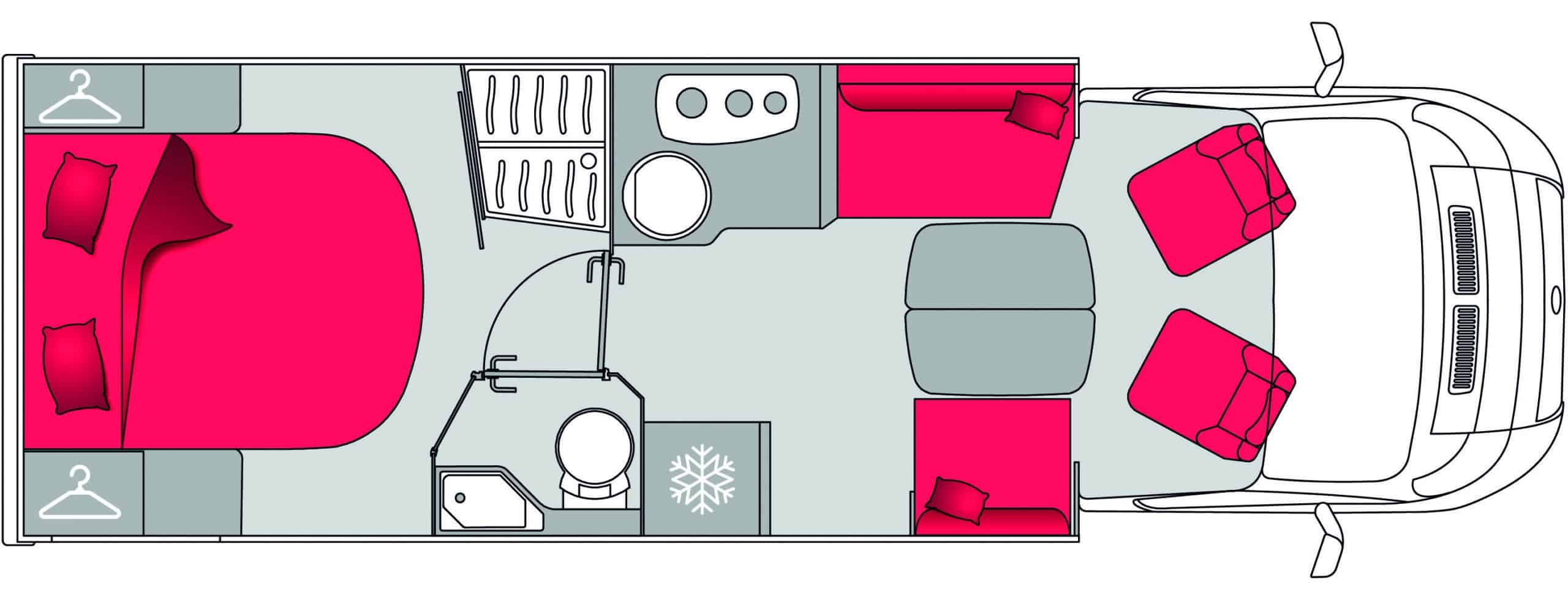
| SPECIFICATIONS | |
|---|---|
| MAKE & MODEL: | Pilote P740 |
| BERTHS: | 4 |
| ENGINE: | 2.2 litre turbo-diesel, 140bhp (180bhp available on pre-order) |
| GEAR BOX: | Nine-speed automatic |
| LENGTH/WIDTH/HEIGHT: | 7450mm/2300mm/2880mm |
| PERFORMANCE: | 105kW, 330Nm torque |
| LENGTH/WIDTH/HEIGHT: | 7555 mm/2390mm/3150mm |
| FRESH/HOT/GREY WATER: | Fresh 135L/Hot 10L/Grey 95L |
| GVW/PAYLOAD: | 3650kg/605kg |
| UNLADEN MASS (TARE): | 2895kg |
| PRICE: | From $214,990 |
For more information, visit https://www.deluxegroup.co.nz/

